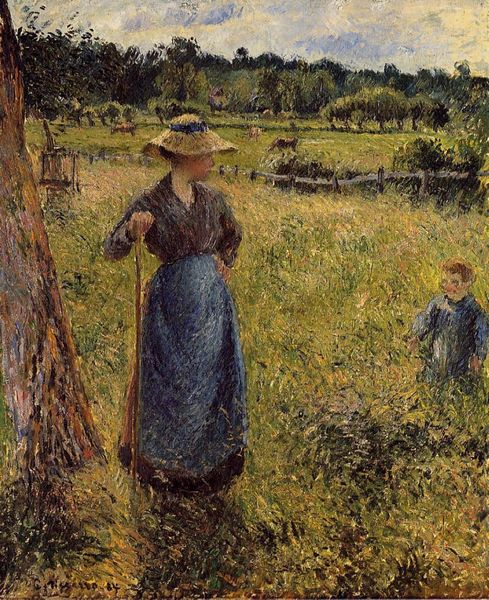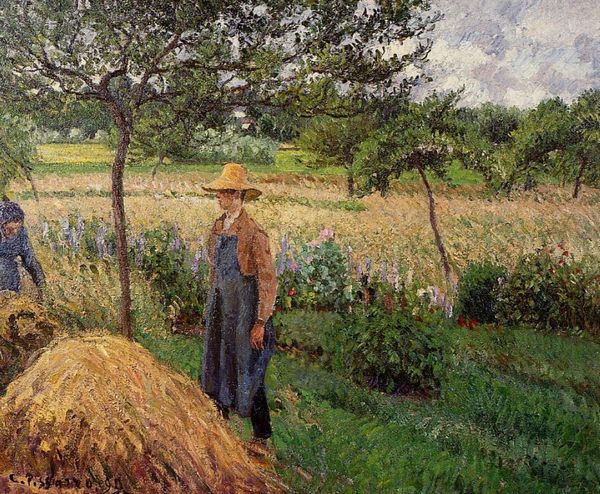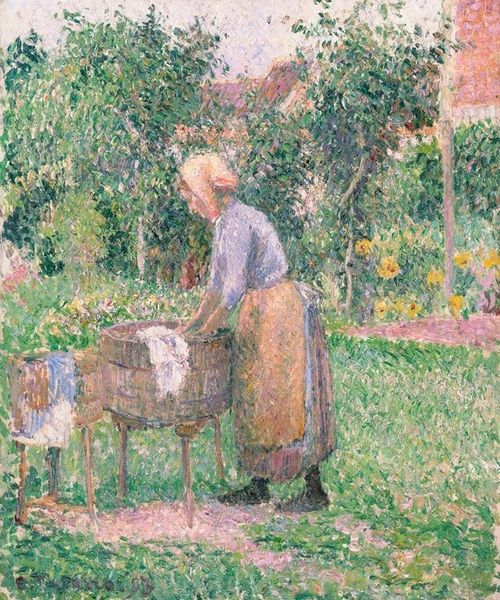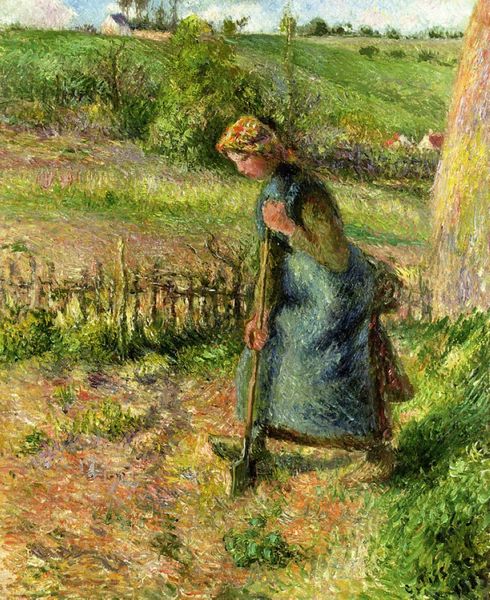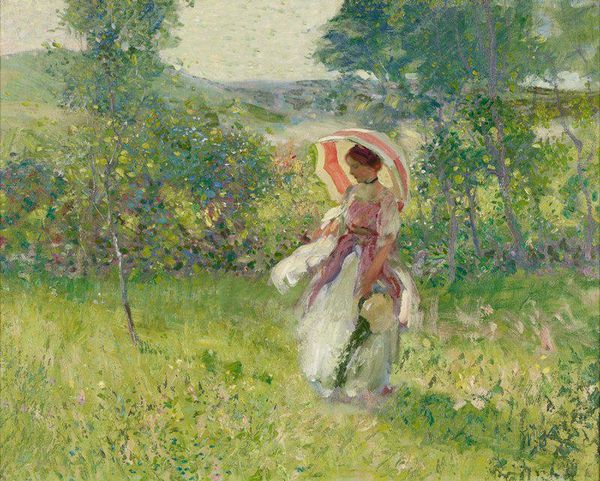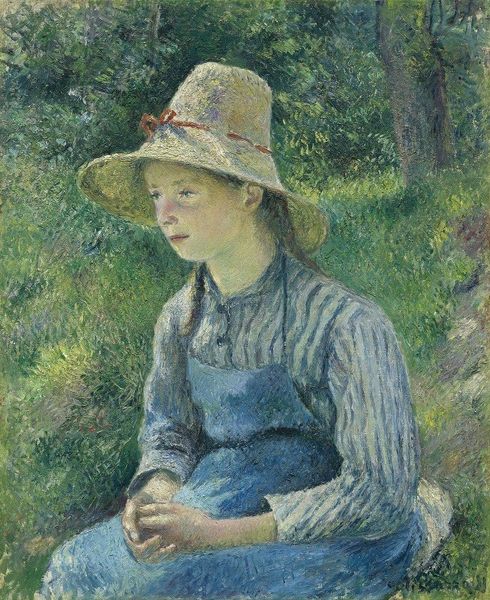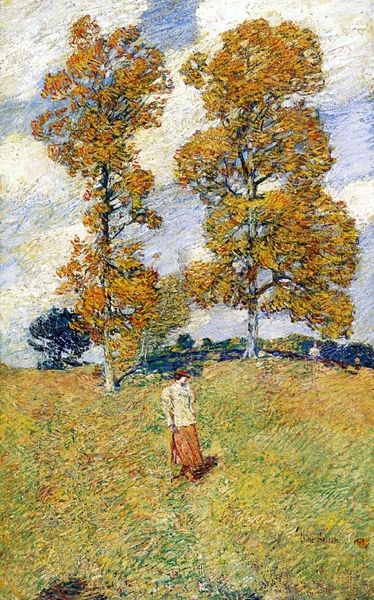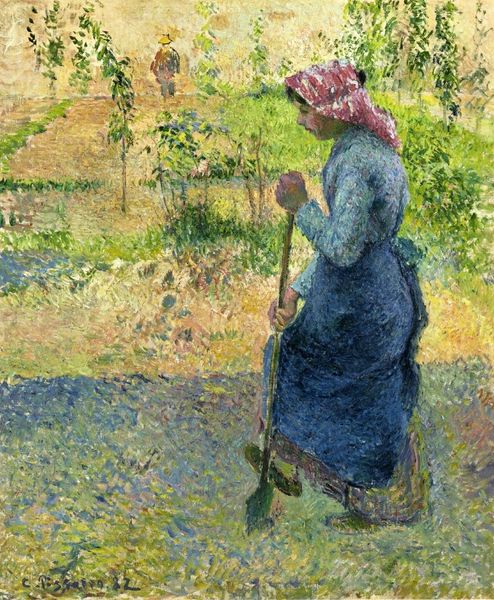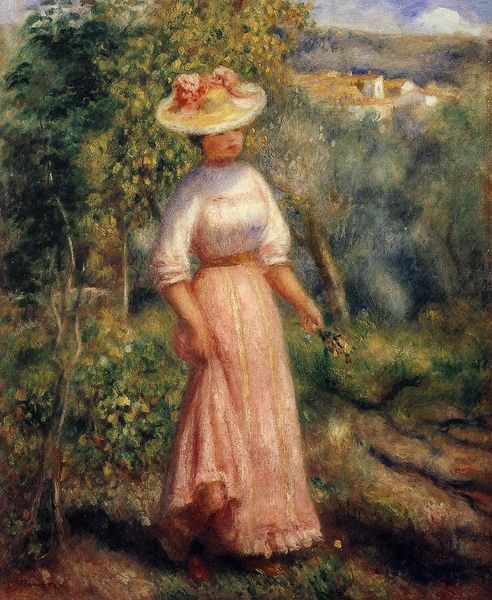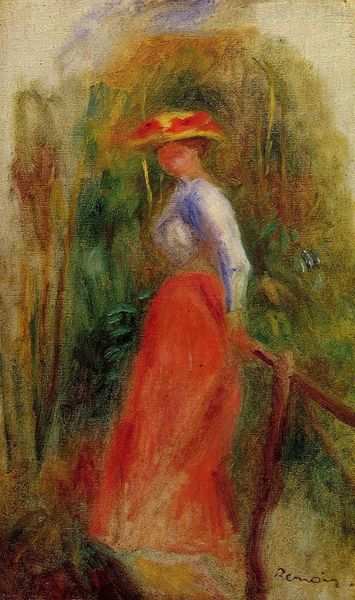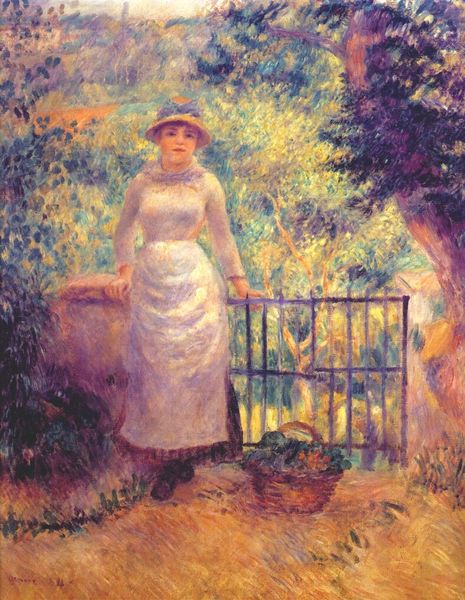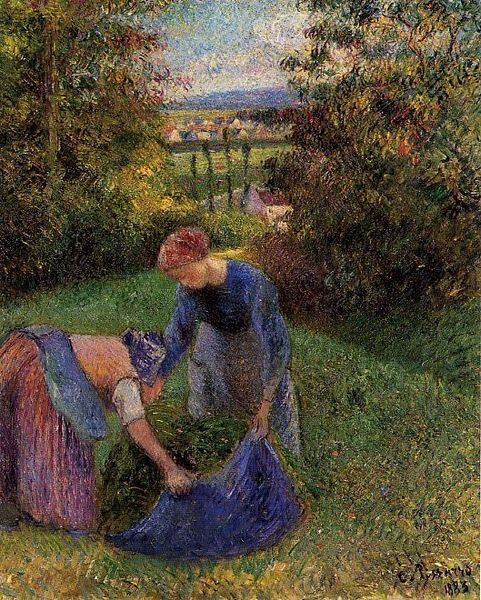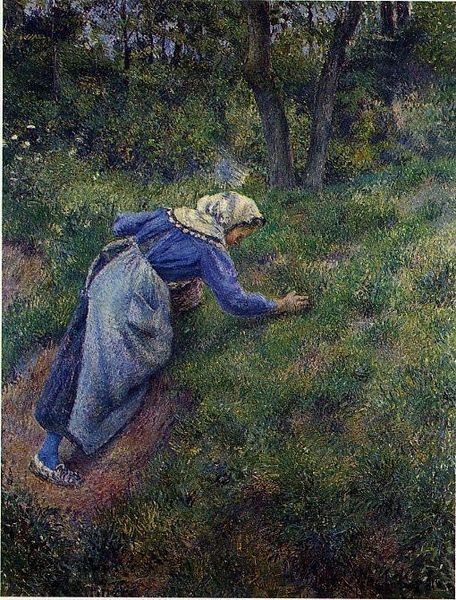
The Gardener, Afternoon Sun, Eragny 1899
0:00
0:00
camillepissarro
Staatsgalerie Stuttgart, Stuttgart, Germany
Dimensions: 92.5 x 65.4 cm
Copyright: Public domain
Curator: Here we have Camille Pissarro’s “The Gardener, Afternoon Sun, Eragny,” painted in 1899. It’s a striking piece. Editor: The overall warmth really grabs you, doesn’t it? That pervasive sunlight—and it does feel like afternoon—creates a comfortable, enveloping mood. It's beautiful in its unassuming, unpolished way. Curator: Pissarro, deeply involved in the Impressionist movement and later a proponent of Pointillism, always focused on scenes of everyday life, rural labor, and the pastoral. We see that here. It’s interesting to observe the shift in artistic interest from historical, mythical, and biblical subjects to genre paintings of everyday life like this. Editor: Yes, the labor. You know, what strikes me is how deliberately Pissarro represents the physicality of working the land. Note the rough texture of the visible brushstrokes depicting the grass and how his use of short strokes brings a tactility that almost makes you feel the weight of the gardener’s bucket in your own hand. The blue linen apron. Curator: This painting really encapsulates his commitment to representing rural labor, which we should remember in its socio-political context. Throughout the late 19th century, agrarian communities were changing drastically due to industrialization. His dedication to capturing these realities demonstrates a profound awareness. Editor: Absolutely, there is something powerful in his championing the ordinary tools, the clothes and the working people themselves as objects worthy of observation and therefore celebration. It gives a dignified and empathetic treatment of what many may see as the banal or even demeaning aspects of farm labor. Curator: And look closely at the way the light diffuses, the way it models form. Consider how impressionism with its own industrial roots via advancements in pigments challenged established academic values that historically had marginalized painters from painting these landscapes outdoors. Editor: It truly feels as though the medium—the materiality of the paint itself—becomes inseparable from the subject matter. By embracing the act of plein-air painting Pissarro merges his artistic processes to reflect those natural cycles, linking human labor directly into this cycle. Curator: This piece, beyond being aesthetically pleasing, prompts questions about societal shifts, class representation, and the politics inherent in artistic choices. Editor: Indeed. By focusing on the working gardener and by embracing painting 'en plein air', he is also creating value of this mode of working with materials out in the landscape.
Comments
No comments
Be the first to comment and join the conversation on the ultimate creative platform.
